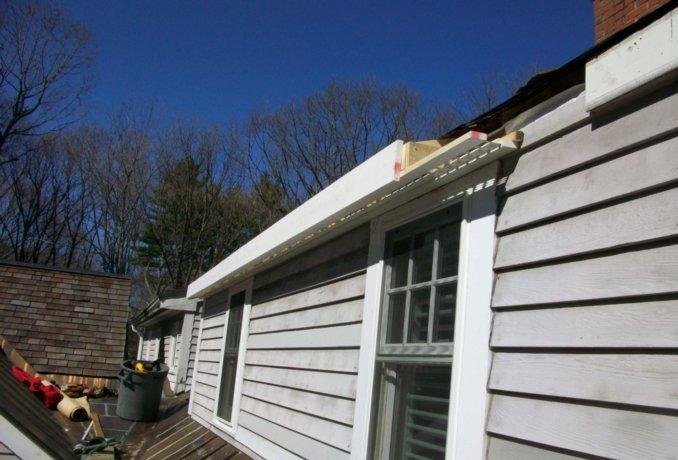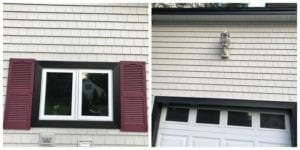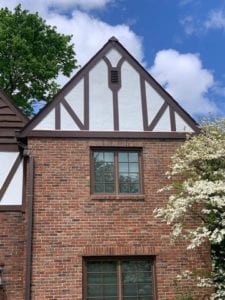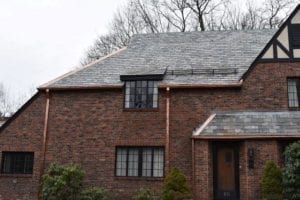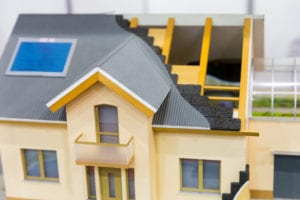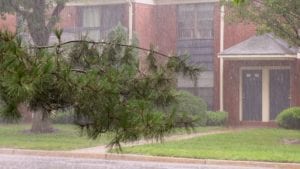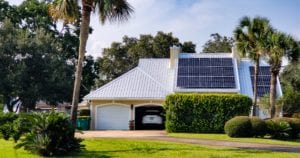Exterior siding is essential to protect your home from the elements. Right now, you’re probably looking to repair or replace the exterior siding on your home but aren’t sure which is your best option. Installing brand new exterior siding can enhance your home’s curb appeal and make it easier to resell your property. But should you choose vinyl siding or cedar siding? There is no universal answer, which is why doing your research will prepare you to make that critical decision. This article will provide you with the basics of each exterior siding option and its pros and cons. Also, there will be guides to direct you towards your best decision.
Exterior Siding Guide:
- Vinyl siding
- Cedar clapboard siding
- Cedar shake siding
- Stucco siding
- Brick siding
How to choose- 6 Factors to Consider:
Exterior siding protects your home from all elements, including rain, hail, wind, debris, and even the sun. Over time, these elements and old age can cause your siding to deteriorate, crack, or discolor. Each form of siding provides its unique benefits and disadvantages. The top forms of exterior siding include vinyl siding, cedar siding, stucco siding, and wood siding. There is no top choice because every individual has specific needs for their home.
-
Vinyl Exterior Siding

Brand new vinyl siding. - Over 30% of American homes have vinyl siding because of its low cost, low maintenance, and versatility. Vinyl siding is a popular exterior siding option for budget-conscious homeowners looking for durability and a multitude of color options. While it has the appearance of classic cedar clapboard siding, it lacks the potential for rot and is easy to clean. Unlike cedar clapboard siding, vinyl siding is virtually maintenance-free and often only requires a garden hose to remove debris. And because vinyl siding has its color built into the siding itself, painting is not needed.
- Not only is vinyl siding a low-maintenance option, but it has a multitude of factors that keep your home insulated and protected from the elements. Because vinyl siding is resistant to moisture, you won’t need to worry about rot, warping, or expanding. Also, mold and bug infestation come secondary to moisture, and nobody wants that. Vinyl siding will protect your home from those significant problems.
- Another notable feature of this form of exterior siding is a foam insulation board that sits within the vinyl panels. Not only does it make your home more energy-efficient, but it protects it from flying debris. One thing to consider is that vinyl siding needs professional installation to reap its benefits. Improper installation of vinyl siding can lead to water leaks, cracks, and a low-budget appearance. A professional roofing company can install high-quality vinyl siding for a lower budget while maintaining a high aesthetic.
-
PROS:
- Budget-friendly
- Low-maintenance
- Versatile
- Energy efficient
- Durable
- Lasts up to 50 years
-
CONS:
- Custom colors are not available.
- Color can fade from long-term sun exposure
- Can crack in extreme cold
- Cannot be painted
-
-
Cedar Clapboard Exterior Siding

- As the inspiration for vinyl siding, cedar clapboard siding is durable, environmentally friendly, and a mid-budget option for homeowners looking for a classic look and strong thermal insulation. Easy to install, cedar clapboard siding is a lower maintenance exterior siding option within the wood siding category and only requires occasional caulking on holes and infrequent paint jobs. It is a renewable resource and better for the environment compared to its vinyl counterpart. While it is not entirely resistant to water as vinyl, cedar is a wood that has natural properties to keep moisture from hanging on.
- If you are looking for a customizable option, you can paint cedar clapboard siding any color, even bright pink! (although your neighbors might complain) Also, cedar clapboard siding has a beautiful natural coloring that can dazzle without paint.
- Cedar clapboard siding’s durability includes its remarkable integrity and how it easily stands up to the elements. Cedar resists rot, but the homeowner will need to do their best to avoid moisture exposure. On the other end of the spectrum, cedar, if not treated, will add fuel to the flame during a house fire.
-
PROS:
- Durable
- Environmentally friendly
- Aesthetically pleasing
- Mid-budget
- Long-lasting
-
CONS:
- Not fully resistant to rot or pests
- Flammable if not treated
- Requires more maintenance
-
-
Cedar Shake Exterior Siding

These images show a couple close up shots so you can really see the detail in the siding. - Like cedar clapboard siding, cedar shake is a natural and classic exterior siding option for homeowners. Often seen on cape houses, cedar shake siding is a timeless material that is aesthetically pleasing and durable. Cedar shake siding is environmentally friendly but requires high maintenance like it’s clapboard counterpart.
-
PROS:
- Classic look
- Durable
- Environmentally friendly
-
CONS:
- Requires more maintenance
- Flammable if not treated
- Not fully resistant to rot or pests
-
- Like cedar clapboard siding, cedar shake is a natural and classic exterior siding option for homeowners. Often seen on cape houses, cedar shake siding is a timeless material that is aesthetically pleasing and durable. Cedar shake siding is environmentally friendly but requires high maintenance like it’s clapboard counterpart.
-
Stucco Exterior Siding

Finished work on stucco siding. - A mixture of cement, water, and sand, stucco siding is a classic Spanish and Mediterranean look that can enhance a property’s exterior appearance. Stucco siding is exceptionally durable to weather and resistant to fire and insects. Every inch of stucco siding provides a 1-hour fire wall rating, which means that it will prevent the spread of fire from one side of the wall to another for one hour. It comes with the option of many different colors for the homeowner to choose from. And because it is installed by hand, different textures can be added as well.
- Because the materials are made from nature, stucco siding can crack in certain weather conditions. Cracking is the most common issue with stucco siding, but it is also the most infrequent. Temperature change and earthquakes can lead to cracks in stucco siding, but stucco siding can last up to 100 years if professionally installed and properly maintained.
-
PROS:
- Fire resistant
- Historical architectural look
- Seamless
- Many color and texture options
-
CONS:
- Can crack from weather or earthquake
- Needs to be professionally installed
-
-
Brick Exterior Siding
- Like cedar and stucco, brick siding is a historically popular choice for your home’s exterior. According to a study by the National Association of Home Builders, 34% of respondents choose brick siding as their top choice for home exteriors. Brick siding is low maintenance

Copper gutters and downspouts along with an ice rail on the house. and does not rot or dent. It also does not need to be painted after installation like it’s counterparts. Brick siding is environmentally friendly as it is composed of clay and shale, two of the most abundant materials on earth.
- Bricks are flame resistant and fireproof. They can even contain a fire to a specific room or part of a home. Also, brick siding is exceptionally durable and can defend itself against debris and high winds elements.
- A few downsides of brick siding is that it is on the expensive side. Compared to vinyl siding, brick siding cost around 6 to 7 percent more. It also does not offer a variety of colors to choose from. While it can be painted, the process will be challenging because of all the grooves within bricks that can be missed. Lastly, while bricks are durable, the mortar connecting the bricks can wear over time and need to be repointed to protect the home’s integrity.
-
PROS:
- Durable
- Classic look
- Environmentally friendly
- Flame-resistant
-
CONS:
- It needs to be maintained
- Expensive
- Not many color options
-
- Like cedar and stucco, brick siding is a historically popular choice for your home’s exterior. According to a study by the National Association of Home Builders, 34% of respondents choose brick siding as their top choice for home exteriors. Brick siding is low maintenance
How to choose exterior siding- 6 Factors to Consider:
After looking over the options, you have reached the point where you need to make a decision. If you are still unsure which form of siding would be best for your home, here are a few questions to consider.
-
-
Energy Efficiency

Model of house, thermal insulation of roof concept. Energy and money-saving materials and systems - Are you looking for a type of siding that will lower your heating bills? Or maybe you live in an area of the world where the temperature inside your home needs to be regulated. In construction, the thermal properties of materials are measured in units known as R-value. The higher the r-value, the more efficient the material insulates your home and protects it from the elements.
- Brick siding has an R.value of 0.11 per inch of thickness, which means it has low thermal properties.
- Stucco siding has an R-value of 0.4 and almost twice the insulating power of brick. It is a good layer of defense against the elements.
- Cedarwood siding has an R-value of 0.8, making it an impressive option for energy efficiency.
- Vinyl siding has an R-value of 0.61, making it a suitable option at a lower price.
- Are you looking for a type of siding that will lower your heating bills? Or maybe you live in an area of the world where the temperature inside your home needs to be regulated. In construction, the thermal properties of materials are measured in units known as R-value. The higher the r-value, the more efficient the material insulates your home and protects it from the elements.
-
Aesthetics

Red brick house with terrace and green grass and trees during summer - Each form of siding offers a look and texture that is different from the other. Some questions to ask yourself if you are considering multiple aesthetics is, what do other homes in your neighborhood have for siding? What is your ideal style for the appearance of your home. Your aesthetic plays a large role in the exterior siding that you end up going with. Will the exterior of your home match the interior? Where are you located in the world?
-
Cost

Model houses and coins with people using the calculator on the background, House cost concept. - The materials and installation can add to the price of the siding project. Figure out your ideal budget before moving forward with the project. Costs will depend on the quality of work and the company you move forward with. Most roofing companies offer financing for siding projects.
-
Durability

- If your home is in a part of the world that is more exposed to harsh weather, than a siding’s durability is something to consider.For instance, stucco siding is flame resistant and can delay flame travel. In some neighborhoods with houses close to each other, homes are sided with stucco to prevent fire travel from one home to another. Or, if you live in an area with high winds or frequent storms, you will need to choose an option that will protect your home from flying debris.
-
Water-resistant

Heavy thunderstorm with hard rain wind bending trees in a residential area 4K video - Each type of siding has its level of protection against water. For instance, vinyl siding is less likely to rot compared to its cedarwood counterpart. Do you live in an area where rain and snow are common? That is something to consider before moving forward.
-
Eco-friendly

- Are you looking to use a material that is better for the planet? Brick, stucco, and wood are made from natural materials and decompose. Vinyl siding, on the other hand, is man-made. If using eco-friendly materials is essential to you, this is something to consider.
-


